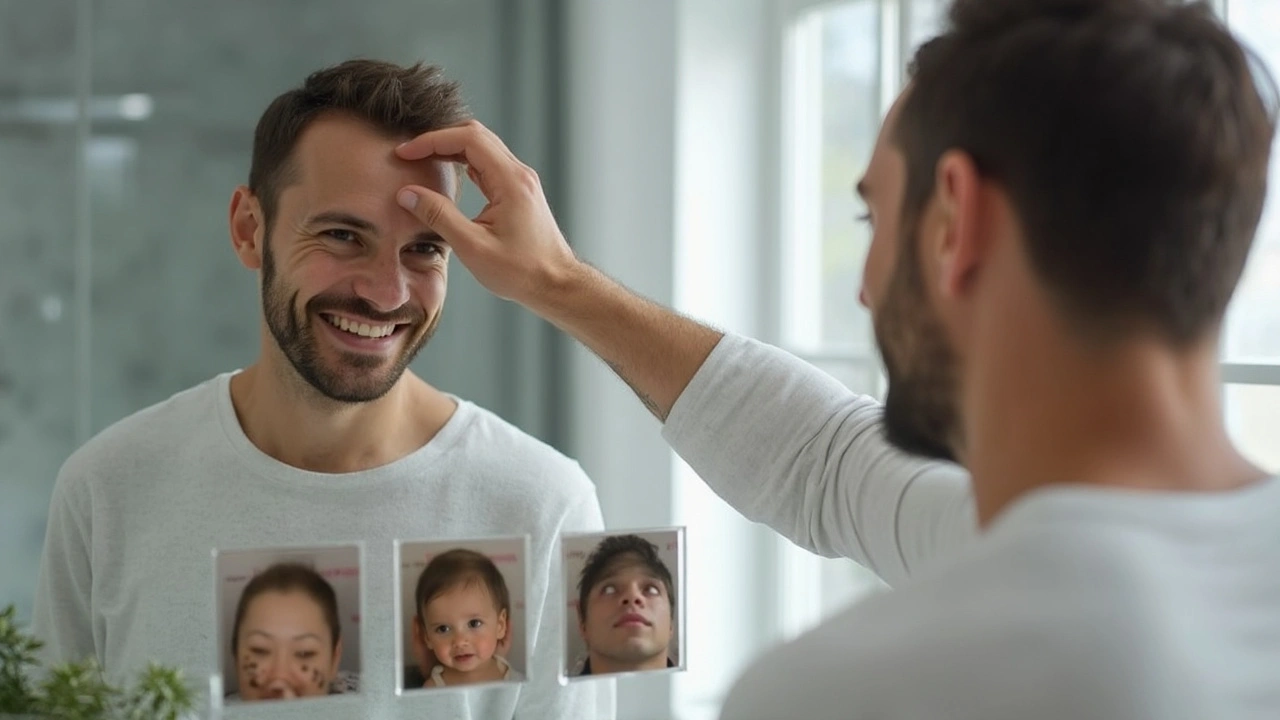Hair Loss Treatment: Real‑World Tips That Actually Work
If you’ve stared at the mirror and noticed more scalp than hair, you’re not alone. Hair loss affects millions, and the good news is there are plenty of ways to slow it down, grow back what’s lost, or at least make what you have look fuller. Below is a no‑fluff guide covering the most common causes, the treatments that have real results, and the lifestyle tweaks that can boost any regimen.
What’s Behind the Thinning?
Before you reach for a product, figure out why your hair is falling out. The most frequent culprits are:
- Genetics (androgenic alopecia): The classic “male/female pattern” that starts with a receding hairline or widening part.
- Hormonal shifts: Pregnancy, menopause, thyroid issues, and high‑DHT levels can all trigger shedding.
- Stress and nutrition: Crash diets, iron deficiency, and chronic stress push hair follicles into a resting phase.
- Medical conditions & meds: Autoimmune diseases, chemotherapy, and certain blood pressure or antidepressant drugs may cause loss.
Identifying the root cause helps you pick the right treatment instead of tossing a dozen random shampoos at the problem.
Top Over‑the‑Counter (OTC) Options
OTC products are the first line for many because they’re easy to try and usually safe.
- Minoxidil (Rogaine): A 2 % solution for women, 5 % for men. It widens blood vessels, letting more nutrients reach follicles. Consistency is key – apply twice a day for at least four months before seeing results.
- Biotin supplements: While biotin deficiency is rare, a daily 5,000‑10,000 µg dose can improve hair texture for those with low levels.
- Ketoconazole shampoo: The anti‑fungal ingredient reduces scalp inflammation and DHT production. Use twice a week for a month, then maintain weekly.
- Caffeine‑infused shampoos: They stimulate the scalp slightly, but think of them as a supportive step rather than a miracle cure.
Always read the label and give yourself at least three months to judge effectiveness.
Prescription Power Moves
If OTC stuff isn’t enough, a doctor can prescribe stronger solutions.
- Finasteride (Propecia): A daily pill that blocks DHT formation. It works best for men with early‑stage pattern baldness. Women of child‑bearing age should avoid it.
- Spironolactone: Often used off‑label for women, it lowers androgen levels and can halt shedding.
- Platelet‑Rich Plasma (PRP) therapy: A dermatologist draws your blood, spins it to concentrate platelets, and injects the serum into the scalp. Results vary, but many see a modest thickness boost after a few sessions.
Prescription meds require monitoring, so schedule a check‑in after a few months to assess progress and side effects.
Natural & Lifestyle Hacks
Even the best medicines need a healthy environment to thrive.
- Diet matters: Aim for lean protein, omega‑3 fatty acids (salmon, walnuts), and plenty of leafy greens. Iron and zinc are also crucial for hair growth.
- Stress control: Meditation, short walks, or a regular sleep schedule can keep cortisol from pushing follicles into shutdown mode.
- Gentle grooming: Avoid tight ponytails, harsh brushes, and heat styling. Let hair air‑dry when possible.
- Scalp massage: A few minutes of daily circular motions can increase blood flow and improve nutrient delivery.
These habits won’t replace medical treatment, but they amplify results and keep new growth healthy.
Ready to take action? Start with a simple routine: minoxidil twice daily, keto‑shampoo twice a week, and a diet boost of fish and leafy veggies. If you notice no change after four months, book a quick appointment to discuss finasteride or PRP. Remember, hair loss is a marathon, not a sprint – steady effort yields the best payoff.
Explore our full library of articles below for deeper dives on each treatment, safety tips, and how to choose the right product for your specific situation.
-
 VIEW POST
VIEW POSTProscalpin: Detailed Guide to Uses, Benefits, and Side Effects for Hair Loss
Jun, 25 2025|11 CommentsDiscover how Proscalpin, a finasteride-based tablet, helps with male pattern baldness. Get insights on uses, effectiveness, side effects, and expert tips for safe results.